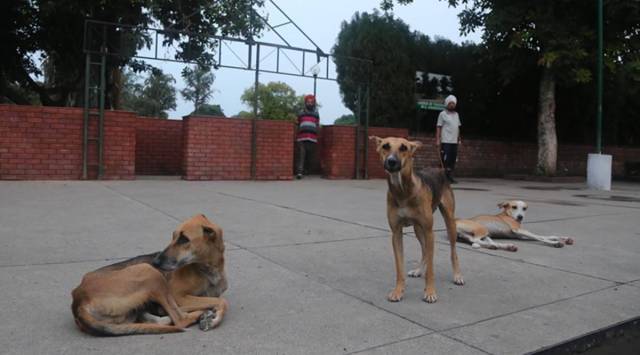- India
- International
More dogs in protected forest areas of Chandigarh worry wildlife officials
The unregulated, exploding population of canines is becoming a threat for the small prey species, which are the natural food of predators living in the wild areas.
 The university has always taken a sensitive and humane stand on animals, said Dr Navjot Kaur, registrar of the university.
The university has always taken a sensitive and humane stand on animals, said Dr Navjot Kaur, registrar of the university.THE RISING population of stray dogs inside the protected forest areas of Chandigarh has emerged as a matter of concern highlighted during the recently held Wildlife Census-2021 in Sukhna Wildlife Sanctuary and forests areas by the Wildlife Institute of India (WII), Dehradun.
The unregulated, exploding population of canines is becoming a threat for the small prey species, which are the natural food of predators living in the wild areas. The wildlife department acknowledged this concern, adding that a strategy, involving NGOs and government machinery, will be formulated to solve this issue.
“Reports of ambushes laid on the prey species including sambar, barking deer, blue bulls etc by packs of stray dogs are received frequently. During the survey, the teams witnessed a number of packs of stray dogs. These packs are a threat to the natural food of the predators, especially leopards which are mostly found in the forests. The option of sterilisation of dogs within the forest area is open but the civic body only works within city limits. We have a plan to engage NGOs to control the increasing population of dogs in the forest. The strategy is yet to materialise,” said Debendra Dalai, Chief Wildlife Warden, UT.
The survey teams observed several packs of dogs around various small and big water bodies inside the protected forest area.
“Summer season is considered to be dogs’ favorite season to kill small mammals near water bodies. It is easy for them to target and kill animals like sambar, blue bulls etc due to the depleted water levels. Carcasses of some of dead animals suggest that they were mauled to death by dogs instead of their natural predators. The trend is being observed nationwide. Serious efforts need to be made to solve this problem,” said an official from the wildlife department .

In April, dogs were found feeding on small animals stuck in mud at Perch dam, which had dried up due to a mechanical failure.
The Sukhna Wildlife Sanctuary is spread in an area of 26 square kilometres. The wildlife census took place in April. The UT forest and wildlife department has WII to compile the wildlife census report as soon as possible.
Apr 16: Latest News
- 01
- 02
- 03
- 04
- 05






































